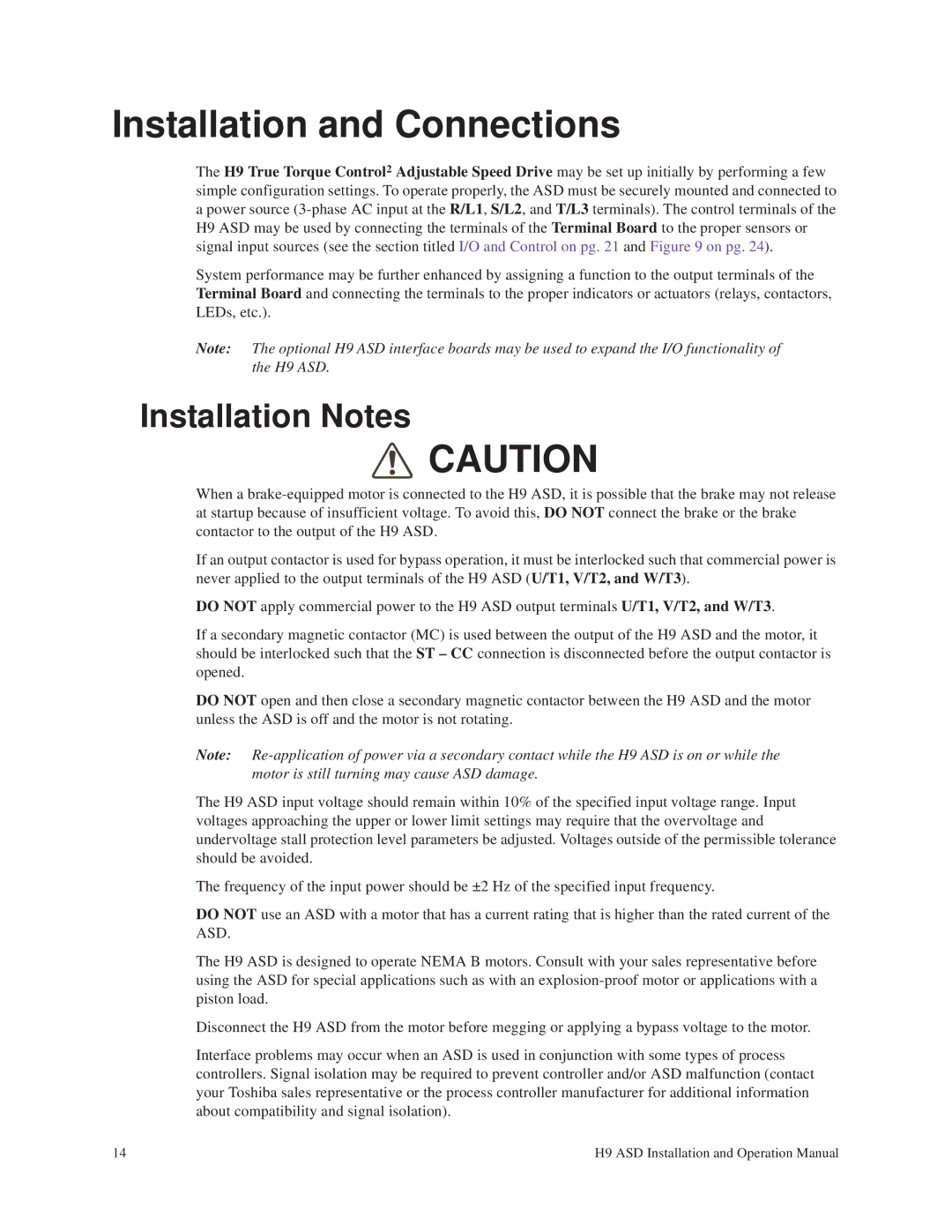Installation and Connections
The H9 True Torque Control2 Adjustable Speed Drive may be set up initially by performing a few simple configuration settings. To operate properly, the ASD must be securely mounted and connected to
apower source
System performance may be further enhanced by assigning a function to the output terminals of the Terminal Board and connecting the terminals to the proper indicators or actuators (relays, contactors, LEDs, etc.).
Note: The optional H9 ASD interface boards may be used to expand the I/O functionality of the H9 ASD.
Installation Notes
![]()
![]() CAUTION
CAUTION
When a
If an output contactor is used for bypass operation, it must be interlocked such that commercial power is never applied to the output terminals of the H9 ASD (U/T1, V/T2, and W/T3).
DO NOT apply commercial power to the H9 ASD output terminals U/T1, V/T2, and W/T3.
If a secondary magnetic contactor (MC) is used between the output of the H9 ASD and the motor, it should be interlocked such that the ST – CC connection is disconnected before the output contactor is opened.
DO NOT open and then close a secondary magnetic contactor between the H9 ASD and the motor unless the ASD is off and the motor is not rotating.
Note:
The H9 ASD input voltage should remain within 10% of the specified input voltage range. Input voltages approaching the upper or lower limit settings may require that the overvoltage and undervoltage stall protection level parameters be adjusted. Voltages outside of the permissible tolerance should be avoided.
The frequency of the input power should be ±2 Hz of the specified input frequency.
DO NOT use an ASD with a motor that has a current rating that is higher than the rated current of the ASD.
The H9 ASD is designed to operate NEMA B motors. Consult with your sales representative before using the ASD for special applications such as with an
Disconnect the H9 ASD from the motor before megging or applying a bypass voltage to the motor.
Interface problems may occur when an ASD is used in conjunction with some types of process controllers. Signal isolation may be required to prevent controller and/or ASD malfunction (contact your Toshiba sales representative or the process controller manufacturer for additional information about compatibility and signal isolation).
14 | H9 ASD Installation and Operation Manual |
